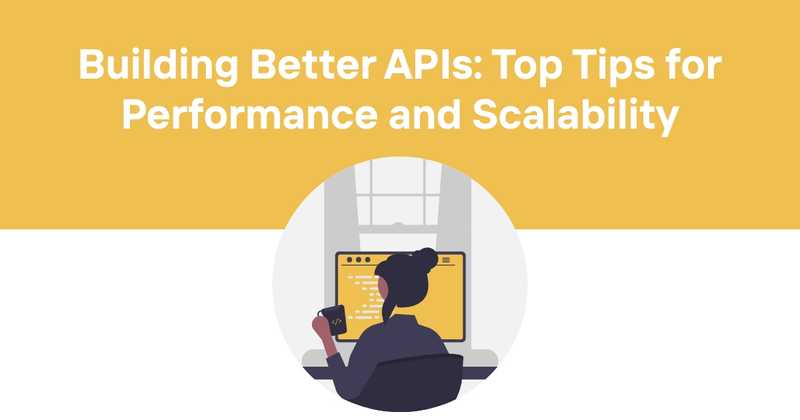Building Better APIs: Top Tips for Performance and Scalability
API Design Best Practices
APIs can allow different systems, services, or platforms to converse with one another. Well-designed API guarantees seamless interaction, better performance, and improvement in user experience. Some of the best practices that are to be applied in designing APIs that guarantee scalability and maintenance regarding efficiency are outlined below.
Table of Contents
- Use RESTful URIs
- Implement Proper HTTP Methods
- Version Your API
- Paginate Large Results
- Use Standard Error Handling
- Protect Your API with Authentication and Authorization
- Return the Right Status Codes
- Document Your API
- Rate Limit Your API
- Performance Optimization by Caching
- Monitoring Your API with Tools
1. Use RESTful URIs
Best Practice: Keep your endpoints obvious, descriptive, and consistent with REST naming convention.
Why it matters: RESTful URIs provide a default structure to set up API paths that will make more sense to a developer using the API.
Example:
Instead,
This makes the URI much more intuitive, and according to RESTful design principles, standard.
2. Use Appropriate HTTP Methods
Best Practice: Use the appropriate HTTP verbs to describe what's happening to the resource.
Why it matters: Each method has some specific use it was meant for, and using them accordingly can ensure predictable behavior of the API.
General Approaches
- GET: To retrieve data
- POST: To create new resources
- PUT/PATCH: performs update of existing resources
- DELETE: To delete resources
Example:
3. Version Your API
Best Practice: Your API should always version to allow for backwards compatibility when updates are made.
Why It Matters: APIs evolve with time. That would mean their older versions can be deprecated. This is the case where a version number would allow clients to continue working and adjust to new changes.
Example:
Accept: application/vnd.api+json;v=1
4. Provide Pagination for Large Responses
Best Practice: Paginate results to avoid performance issues and data overload at the client-side level.
Why It Matters: Large datasets can be cumbersome and load the client-side slowly. Pagination helps send manageable chunks of data.
Sample:
?page=1&limit=10.
5. Errors are handled uniformly
Best Practice: Your API should return information structured error messages accompanying appropriate status codes.
Why It Matters "Clear and consistent error messages help developers quickly comprehend exactly what has gone wrong and how to fix the problem.
Example:
404: Resource not found
400: Validation Problems
6. Secure Your API with Authentication and Authorization
Best Practice: Let your API get authentication and access control via either OAuth, JWT, or API key.
Why It Matters: The security of APIs ensures that only authorized users can access sensitive data or perform certain actions.
Example:
require that 'Authorization' headers be sent with tokens to protected endpoints.
7. Return the Correct Status Codes
Best Practice: Returning proper HTTP status codes will give an indication about the success or failure of the request.
Why it matters: Good status codes make the result of an API client request more understandable to clients whether it-succeeded-or failed.
Common Status Codes:
201 Created: Resource created successfully
400 Bad Request: A client-side error
401 Unauthorized: Authentication required
404 Not Found: User not found
500 Internal Server Error: A generic server error
8. Document Your API
Best Practice: Provide full documentation to the developers by describing the endpoints, their parameters, and sample responses.
Why it matters: Good documentation helps developers integrate with your API faster and reduces the number of support queries.
Example:
- Provide API interactive documentation via tools such as Swagger or Postman.
9. Rate Limit Your API
Best Practice: Throttle the traffic in order to avoid the possible abuses and assure a fair usage of your API.
Why It Matters: Rate limiting is important in order to prevent service overload, ensuring that no one client or user overloads the system.
Example:
X-RateLimit-Limit: Total limit
X-RateLimit-Remaining: Remaining requests
If exceeded, return status code 429 Too Many Requests.
10. Request Caching for Performance Optimization
Best Practice: Cache wherever possible to reduce the number of requests to a server.
Why it matters: This reduces duplication of data fetched by caching and usually increases the performance of your API by returning regularly solicited data faster.
Example:
- Returning Cache-Control headers with instructions of how long clients should cache responses for.
11. Monitoring Your API with Tools
Best Practice: Make full use of monitoring tools as Odown.io, Postman API monitoring or other services to monitor the uptime and performance of your API. Why It Matters: Through continuous monitoring, downtime, slow responses, and unexpected behavior are noticed. Therefore, one can begin immediate troubleshooting to reduce any further disruption to your users.
Example:
- Set up services like Odown.io to get notified if it's down or responding slowly. Observe the latency, request failures, or rate limit violations in APIs to keep your API in pristine condition.
Conclusion
API design best practices like this help make your API robust, efficient, and easy to use. This, in turn, will make the developer experience and overall system performance much better, ensuring it is highly scalable and maintainable for a long time. Putting structure into your endpoints, using proper status codes, securing your API, and monitoring health across it-all of these go a long way toward having a complete and reliable API strategy.



